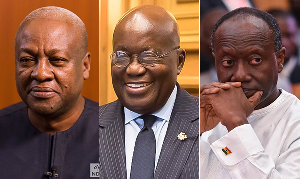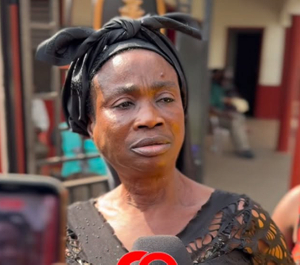The nation has been gripped in recent weeks by the controversy surrounding the Agyapa Royalties transaction, which seeks to encumber the bulk of Ghana’s future gold royalties to a special purpose vehicle (SPV) company in Jersey in the Channel Islands, in what some lawyers have argued is for an indeterminate term.
A raging debate regarding several aspects of the transaction has ensued in the country, including;
• alleged breaches of corporate governance best practices
• alleged conflict of interest in relation to an appointment to a senior management role of the SPV and the award of contract to a legal advisory firm
• alleged lack of transparency with parliament which hinders the oversight role of the people’s representatives
• alleged lack of public consultation and engagement with civil society organisations
• the potential financial impact of the transaction on future government budgets
• the balance of the transaction risk versus anticipated/perceived rewards, which I wrote about last week
• inter-generational equity allocation issues
• ideological differences regarding the structures needed for prudent management of the country’s mineral royalties, etc.
Perhaps however, the issue that has stoked the most attention and controversy, and in some cases outrage, is the Government of Ghana’s (GOG) overall valuation of the Agyapa Royalties transaction at $ 1 billion, ahead of the intended listing of the Jersey SPV on the London Stock Exchange (LSE).
Two articles challenging this valuation of the transaction have since been published and have garnered much attention. These are the articles by Fui Tsikata/Kofi Ansah and Bright Simons of IMANI Africa. Both articles show that GOG’s valuation represents a considerable under-valuation of the transaction. Consequently, Ghana would be at a significant disadvantage if the transaction proceeds in its current form.
The valuation techniques used by Bright Simons and Fui Tsikata/Kofi Ansah however, is what is known by analysts as deterministic. Deterministic techniques are driven by only one scenario of the underlying variables, which in the case of the Agyapa Royalties transaction are the price of gold and the quantity produced by the companies/concessions assigned to the transaction.
Deterministic techniques implicitly assume that the analyst has perfect foresight of the evolution of the underlying variables over time. They are unable to properly incorporate and account for the volatilities and probabilities characterising naturally stochastic variables such as gold prices and production levels.
This is an important limitation of deterministic techniques, which makes them less suitable for valuing assets such as Agyapa Royalties, which of course has volatile underlying variable movements (i.e. the price of gold, the quantity produced by the companies/concessions assigned to the transaction, and hence the level of royalties streamed). Gold prices for instance can be very volatile and sometimes fluctuate significantly as we have seen since the COVID-19 pandemic struck. For this reason, the deterministic techniques used by Bright Simons and Fui Tsikata/Kofi Ansah are simplistic at best, although to be fair their articles were somewhat clearly purposed at simplifying the analysis for public appreciation and understanding.
For more realistic valuation of assets with underlying volatile variable movements however, economists/analysts use more advanced stochastic techniques that have probability theory at their foundation. Such techniques more accurately capture and characterise the unpredictable nature of the value of assets with underlying volatile variable movements.
They ensure that observed valuation results are not unduly biased by the choice of variable values chosen by the analyst. For an unbiased valuation of the Agyapa Royalties transaction therefore, an advanced stochastic technique is required. There are a number of these techniques such as Real Options Analysis and Monte Carlo simulation. The Monte Carlo simulation technique is perhaps more widely used. To facilitate accessibility of my analysis to as wide an audience as possible, I have chosen to use this technique in valuing the Agyapa Royalties transaction.
In all the Monte Carlo simulation scenarios, I assumed a minimum and maximum gold price of $1000/oz and $2200/oz respectively, and a minimum and maximum production level of the assigned Agyapa companies/concessions at 5 million oz and 7 million oz respectively. Following Fui Tsikata and Kofi Ansah, I applied a royalty tax rate of 4.40% for simulated gold prices of $1500/oz or more; and a royalty tax rate of 4.10% for simulated gold prices less than $1500/oz. A discount rate of 5% was also applied in all cases. For transparency and to aid the interested technical reader, the MATLAB computer software code I wrote to conduct my analysis is provided as an attachment to this article.
The results of my analysis are provided in the figures below, showing the 95% confidence interval (CI) of the calculated value of the Agyapa Royalties transaction for different median gold prices and production levels over a 15-year term.
Summarily, •Figure 1 shows that with an assumed median gold price of $1200/oz, and median production of 5.5 million oz, over a 15-year term, one can say with 95% certainty that the true value of the Agyapa Royalties vehicle ranges between $3.218 – 3.227 billion.
• Figure 2 shows that with an assumed median gold price of $1600/oz, and median production of 5.5 million oz, over a 15-year term, one can say with 95% certainty that the true value of the Agyapa Royalties vehicle ranges between $3.536 – 3.544 billion.
• Figure 3 shows that with an assumed median gold price of $2000/oz, and median production of 5.5 million oz, over a 15-year term, one can say with 95% certainty that the true value of the Agyapa Royalties vehicle ranges between $ 3.841 – 3.849 billion.
The table below provides further results of the value of the Agyapa Royalties transaction for different permutations of the underlying variables (i.e. gold prices, production levels, and effective term of the transaction). It shows for example that if we assume a 25-year term of the transaction, with a median gold price of $1600/oz and median production level of 6.0 million oz in that time, then one can say with 95% certainty that the true value of the Agyapa Royalties transaction ranges between $4.942 – 4.951 billon.
Most realistic scenarios of the underlying variables show that the GOG’s valuation of the Agyapa Royalties transaction at $ 1 billion constitutes a considerable under-valuation of the transaction. As Bright Simons recently argued, “initial under-valuation hurts Ghana, whose royalties have to be priced-in based on the initial “consideration” in the contract of acquisition”. What this means is that Ghana may be significantly short-changed on the capital markets if/when the Agyapa Royalties vehicle is eventually listed on the LSE with the current GOG valuation.
Read the document below
Opinions of Sunday, 6 September 2020
Columnist: Dr Yakubu Abdul-Salam















